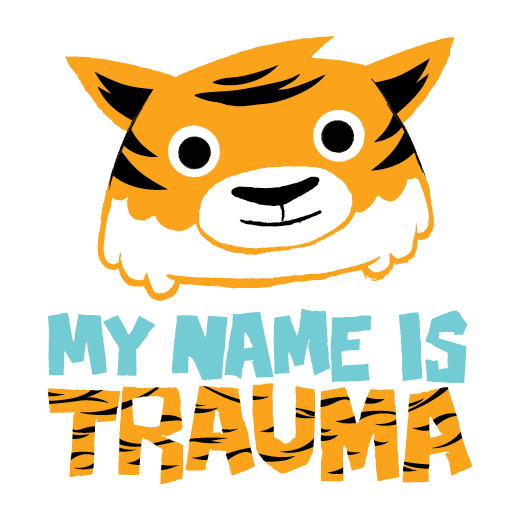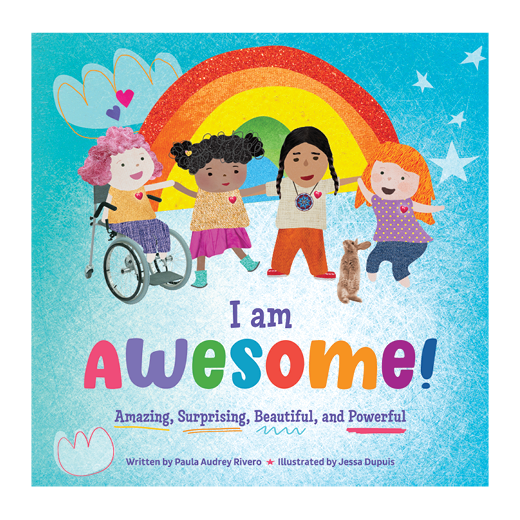7 Myths about Autism
Image description: The word “Autism” is spelled out in square letter tiles against a dotted multicolor background.
Autism, or Autism Spectrum Disorder, can be a complex diagnosis for individuals to navigate, and no two autistic people are completely alike—which makes autism a condition that is easily misunderstood.
Many of our clients, blog readers, and some members of our own therapy team are autistic and have their own unique experiences–be it personal neurodivergent experiences from childhood to now, or as a supporter of an autistic loved one–but generally speaking, we all possess different experiences and views of being on the autism spectrum.
With different experiences, there can also be myths and misconceptions that cloud judgment about who autistic people are, how they live, work and interact with others. These myths can create stigmas preventing proper understanding and acceptance—and in the worst and unfortunate historical cases, othering and discrimination.
Whether you’re a parent, caregiver, someone on the autism spectrum, or an autistic parent yourself, it takes both autistic people and their allies to help separate fact from fiction.
Our aim in debunking seven myths about autism is to help shift narratives and celebrate the unique strengths of autistic individuals. By doing so, we hope to foster a more positive and accepting view of autism in our clients, families, and communities.
Myth 1: Autism presents the same in every autistic person.
Image description: Two young girls look and smile at one another.
The autism spectrum is a ‘spectrum’ for a reason! Every brain is different; no two autistic individuals are the same, and each person has their strengths and challenges. This can include:
Different support needs (Multi-person team, fully independent with self-managed adaptations, assisted independent living, parents or otherwise—this is often described in a range from low, medium, to high support needs)
Different sensory profiles (Clothing and food preferences, sensory tolerances in the environment)
Different social and relational preferences and challenges (Outspoken in social environments, or difficulty engaging in social environments, social cues and understanding social rules, masking)
Different special interests and skills
Before we continue, it is important to acknowledge that while we just mentioned various ways autism can present itself, autism is largely considered an invisible disability (Mallipeddi & VanDaalen, 2022). There are also additional intersectional frameworks such as race, gender, sexuality, class, and other constructs that have made autism and other invisible disabilities identified less often in other population groups.
By embracing and affirming diversity across the spectrum, we can celebrate and uplift autistic people in our families and communities. This influences our therapy practice at Qi Creative—each of our therapists is committed to uplifting and supporting each individual in ways that fit them best.
Myth 2: Vaccines and parenting styles cause autism.
Image description: A baby is embraced by an adult. The baby is standing, while the adult is seated in a chair and able to reach their arms around the baby’s head and shoulders.
This myth is pervasive in a historical context, where autism over 60 years ago was “originally identified as an emotional disorder caused by parental ambivalence and rejection” (Mesibov, Adams & Schopler, 2000). Today, autism is more accurately understood as a neurodevelopmental condition with complex genetic and environmental influences.
Likewise, despite persistent rumours, extensive research and meta-analysis of past studies have shown no link between vaccines and autism (Taylor, Swerdfeger, & Eslick, 2014). So, we can safely toss this myth to the side and focus on supportive, evidence-based understandings and care approaches that work.
Myth 3: Autistic people lack empathy, don’t feel affection, and can’t have deep emotional connections.
Image description: Two young adults are hugging and smiling.
The idea that autistic individuals aren’t able to form deep connections is as outdated as it gets and likely is influenced by historical stigmas and dehumanization (Cage, Di Monaco, & Newell, 2019). While some people with autism might need more time than others with social communication, need more time to refresh from or prepare for social events, or be given misleading descriptors such as shy, outspoken or blunt before diagnosis, many do just fine given the right circumstances, adaptations, and people.
Difficulty recognizing contextual clues (facial expressions, body language) and social skills challenges can be related to some autistic people, but these challenges are not necessarily the same as not feeling emotion or not having empathy.
As friends and supporters, we can appreciate and respect the unique communication styles of those around us and adapt to find common ground as we would with anybody else.
Myth 4: Children can grow out of being autistic.
Image description: A young teenager plays a pink guitar, with a pink box on the ground collecting donations.
Some people believe that autism is a condition that only affects children, and that as children grow up, their brains will eventually regulate and all their sensory challenges will end. But autism isn’t something can be ‘cured’ or outgrown. It’s a lifelong aspect of who a person is. But what can change is how well someone adapts and manages their challenges (Bölte, 2014).
Autistic children grow up to become autistic adults. This is a saying that many other researchers, allies, and autistic people have had to hammer down because of how this myth has led to gaps in researching and understanding how autism affects people into adulthood (Kirby & McDonald, 2021).
When therapy providers such as ourselves come to work with autistic people, we are coaching and supporting autistic and other neurodivergent people in ways that help them understand their unique brains, their adaptive needs, and achieve both realistic goals and meaningful independence in their lives. Many clients may be working with us for years at a time, and we welcome that opportunity with gratitude for each of our families to be a part of that growth.
Myth 5: Autistic people can’t improve their level of functioning.
Image description: 8 boys stand in a row, all wearing medals around their necks.
Change is the only constant in the world: depending on the level of support needs, people with autism can improve their skills and functioning over time.
What’s important to remember is that autistic and neurodivergent people are supported, coached and accommodated to THEIR levels and ideas of achievement and success, rather than specific goalposts of behaviours that mimic neurotypical functioning.
Again, like the previous myths we discussed, autism is an indelible aspect of an individual, but with support, therapy, and encouragement from a responsive community, many autistic individuals can achieve milestones and lead fulfilling lives.
As peers and supporters, it’s important that we provide opportunities for growth along the way and celebrate every achievement, no matter how small.
Myth 6: If your support needs are low, you’re ‘just a little autistic’ or ‘basically neurotypical’
Image description: A child arranges building blocks on a desk.
In current disability research and culture, High/Low Functioning labels are becoming outdated, with instead High/Medium/Low support needs being more appropriate (Gillette, 2023). Being low support needs does not mean you’re ‘a little autistic’. Remember that support needs can fluctuate and that autism is a lifelong developmental condition.
Furthermore, some autistic people considered ‘high functioning’ in the past may be high masking, where their presentation and functioning on the outside may have been modelled by caregivers and society to ‘act neurotypically’ rather than address root challenges, often at great cost to themselves—we discuss Masking in another Qi blog post.
As a past Qi Coach, Dana, put it: “Someone with a diagnosis of ‘mild autism’ doesn’t mean they experience their autism mildly; it means that YOU experience their autism mildly.”
Autism has also historically been identified more predominantly in males rather than females (Haney, 2016), which has made presentation and criteria of autism even more difficult to diagnose over the past several decades. In our Qi Talks Podcast, Coach Cat shared her diagnosis of AuDHD (Autism and ADHD) at the age of 30, and how she grew up with descriptors such as being “too much” for others, having social and sensory challenges that were considered normal for women and girls, and the lengths she needed to go to advocate for herself in pursuit of a diagnosis.
Many autistic individuals fall somewhere between high/medium/low support needs, and support needs can change day by day! Sometimes, we experience super productive days where we can meet multiple deadlines and still have time to walk our pets and visit loved ones for dinner. Other days, we may need more support than usual and spend most of the day resting. Let’s recognize the diverse capabilities of autistic people instead of boxing them into stereotypes.
Myth 7: Autism, ADHD and other neurodivergent conditions are overly diagnosed these days
Image description: 3 women stand together, smiling and laughing.
Autism diagnoses save lives. As we’ve mentioned so far in this article, autism in the past was more likely to be diagnosed in boys rather than girls—and in even fewer instances when additional intersectional factors come into play.
Did you know that Autism and ADHD weren’t allowed to be diagnosed together until 2013 (Ramtekkar, 2017), when the DSM-5 was updated and published? As our understanding grows, so does our ability to screen and diagnose more people sooner.
We also understand and acknowledge that getting an autism diagnosis is easier said than done, with potential costs in the thousands and months of waitlists to be seen by specialists. Many pervasive barriers exist today in bridging this healthcare gap, including:
If you are able to self-advocate, or if you require support to advocate for your needs
Access to the means and mediums of advocacy (family resource networks, libraries, internet, social workers, transportation, money)
Getting childcare, time off work lined up so you can attend medical appointments
The availability of specialists in your area
Access to care that is affordable, free, or subsidized
Access to care that is consistent and can follow through on strategies and goals in the long term
Access to care that doesn’t stop once children grow into adults
Cultural/familial perspectives around autism and neurodivergence; intergenerational stigma around having neurodivergent family members; fear of judgement
Reluctance to pursue a diagnosis if you are well into adulthood or reluctance to disclose a diagnosis to others
Fear of discrimination among family, the workforce, or other personal and professional settings
Before realizing they are on the spectrum, many autistic people feel shame and confusion about who they are and why life is difficult for them to live through, not to mention caregivers who may be carrying preconceived notions of what Autism is and how it presents. But through diagnosis, autistic people can have a better understanding of how their brains work, how to accommodate themselves better, and most importantly, lay the groundwork for the practice of accepting and loving themselves for who they are.
Embracing All Abilities
In conclusion, reflecting on and debunking these myths is for more than encouraging inclusion: a much larger “neurodiversity paradigm is reshaping how we understand, use language, interpret and undertake research, and support autistic people and those with related neurodevelopmental differences across the lifespan” (Marion & Lorna, 2022).
When specific beliefs and stigmas are in place, this reverberates across diagnostic criteria, intervention, and societal support—and autism promotion, affirmation, and acceptance can instead reverberate across the medical and social landscape for the better.
We hope to foster a more inclusive and understanding world by debunking these myths, one blog post at a time. By doing so, we all can champion acceptance and celebrate the incredible diversity of autistic and neurodiverse people.
WOOSH!
References
Bölte, S. (2014). Is autism curable? Developmental Medicine & Child Neurology, 56(10), 927-931. https://doi.org/10.1111/dmcn.12495
Cage, E., Di Monaco, J., & Newell, V. (2019). Understanding, attitudes and dehumanisation towards autistic people. Autism, 23(6), 1373-1383. https://doi.org/10.1177/1362361318811290
Chamak, B., Bonniau, B., & Jaunay, E. (2008). What Can We Learn about Autism from Autistic Persons?. Psychother Psychosom, 77(5), 271-279. https://doi.org/10.1159/000140086
Gillette, H. (2023) Why We No Longer Say High or Low Functioning for Autism. Healthline. https://www.healthline.com/health/autism/functioning-labels-autism
Haney, J. L. (2016). Autism, females, and the DSM-5: Gender bias in autism diagnosis. Social Work in Mental Health, 14(4), 396–407. https://doi.org/10.1080/15332985.2015.1031858
Kirby, A., & McDonald, K. (2021). The State of the Science on Autism in Adulthood: Building an Evidence Base for Change. Autism Adulthood. March 2021; 3(1): 2–4. Published online 2021 Mar 18. doi: 10.1089/aut.2020.29018.avk
Losh, M., & Capps, L. (2006). Understanding of emotional experience in autism: Insights from the personal accounts of high-functioning children with autism. Developmental Psychology, 42(5), 809–818. https://doi.org/10.1037/0012-1649.42.5.809
Rutherford, M. and Johnston, L. (2022). Rethinking autism assessment, diagnosis, and intervention within a neurodevelopmental pathway framework. Autism Spectrum Disorders - Recent Advances and New Perspectives. IntechOpen. https://doi.org/10.5772/intechopen.108784.
Mallipeddi, N., & VanDaalenm, R. (2022). Intersectionality Within Critical Autism Studies: A Narrative Review. Autism in Adulthood, 4(4). Published online 2022 Dec 13. https://doi.org/10.1089/aut.2021.0014
Mesibov, G. B., Adams, L. W., & Schopler, E. (2000). Autism: A Brief History. Psychoanalytic Inquiry, 20(5), 637–647. https://doi.org/10.1080/07351692009348913
Ramtekkar, U. (2017). DSM-5 Changes in Attention Deficit Hyperactivity Disorder and Autism Spectrum Disorder: Implications for Comorbid Sleep Issues. Children, 4(8), 62; https://doi.org/10.3390/children4080062
Taylor, L., Swerdfeger, A., & Eslick, G. (2014). Vaccines are not associated with autism: An evidence-based meta-analysis of case-control and cohort studies. Vaccine, 32(29), 3623-3629. https://doi.org/10.1016/j.vaccine.2014.04.085













